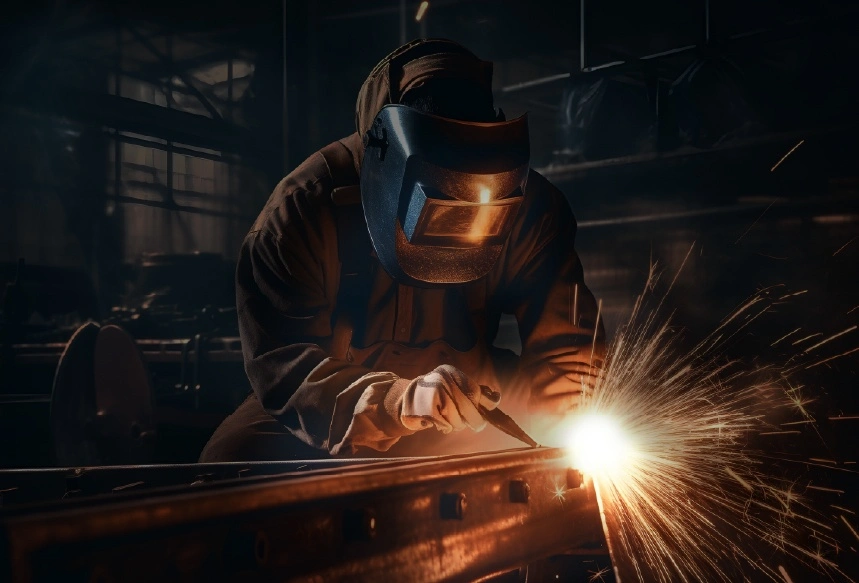RSI is a Great Training Option for Everyone
Learn more about how we can prepare you to advance your career.
Do you weld metal and are interested in learning more about welding joints? If so, you have come to the right place. This article reviews the five basic types of welding joints so you can make quality welds that are cleaner and stronger.
What is the Difference Between a Weld and a Joint?
While these terms may be used interchangeably in some cases, they are two separate terms that identify a uniqueness in the welding process. A joint is the point at which two or more pieces of metal are brought together to create a desired shape. On the other hand, a weld is used to make the joint and create one unified structure.
What is a Welding Joint?
A welding joint is a process of joining two or more metal pieces to form a single structure. There are five basic types of welding joints that you will learn during the Professional Welder program at Tulsa Welding School (TWS).
What are the 5 Basic Types of Welding Joints?
In welding, there are 5 basic types of welding joints.1 They include:
Butt Joints
Get Started on the Path to a New Career
Fill out our form to learn how we can help you change your life.
Butt joints are the most common type of welding joint used. It is the junction where two plates are butted together and welded at the edges. This welding joint helps the metal increase its strength. The specific design of the butt joint depends on the thickness and edge preparation of the metal.
Corner Joints
A corner joint is a weld where two pieces of metal are welded at a 90-degree angle to form an “L” shape. Corner joint welding is popular when joining sheet metal together. A corner joint can be a flush, half-open, or full-open weld.
Edge Joints
Edge joint is a welding process in which two pieces of metal are welded together on parallel planes. The edges can be cut, ground, or machined into groove types that create different amounts of penetration.
Lap Joints
In a lap joint welding process, two pieces of metal of different thicknesses are overlapped and welded together. Lap joints are common in sheet metal welding. Creating a lap joint helps reinforce the weld by removing the gap between the overlapping metals.
T-Joints (Tee Joint)
Similar to corner joints, in a Tee joint, two pieces of metal are welded at a 90-degree angle to form a “T” shape. Tee welding is used to achieve optimal strength for structural steel and tubing. The types of welding used for tee joint welding include MIG, TIG, and stick welding.
Why is Choosing the Right Weld Joint Critical?
Choosing the right weld joint, based on the metal thickness, bevel, or groove, creates the strongest joint possible. As a welder, you will need to understand the force applied to a weld and decide which welding joint will achieve weld integrity and quality to prevent structural failure.
Want to Learn More?
The Professional Welder & Welding Specialist with Pipefitting programs at Tulsa Welding School’s Houston campus starts by helping you know what it’s like to be a welder in interactive workshop courses and welding booths. You’ll be trained in structural, flux core, and pipe welding in as little as seven months. You’ll also be prepared to excel in job interviews and welding tests for various certifications.
Read about the types of welding careers you can pursue with your skills. Ready to start a Professional Welding program or Welding Specialist with Pipefitting program? Contact us today about our welding certification preparation program.
1) https://app.aws.org/mwf/attachments/64/225364/AWSWeldSymbolchart.pdf




